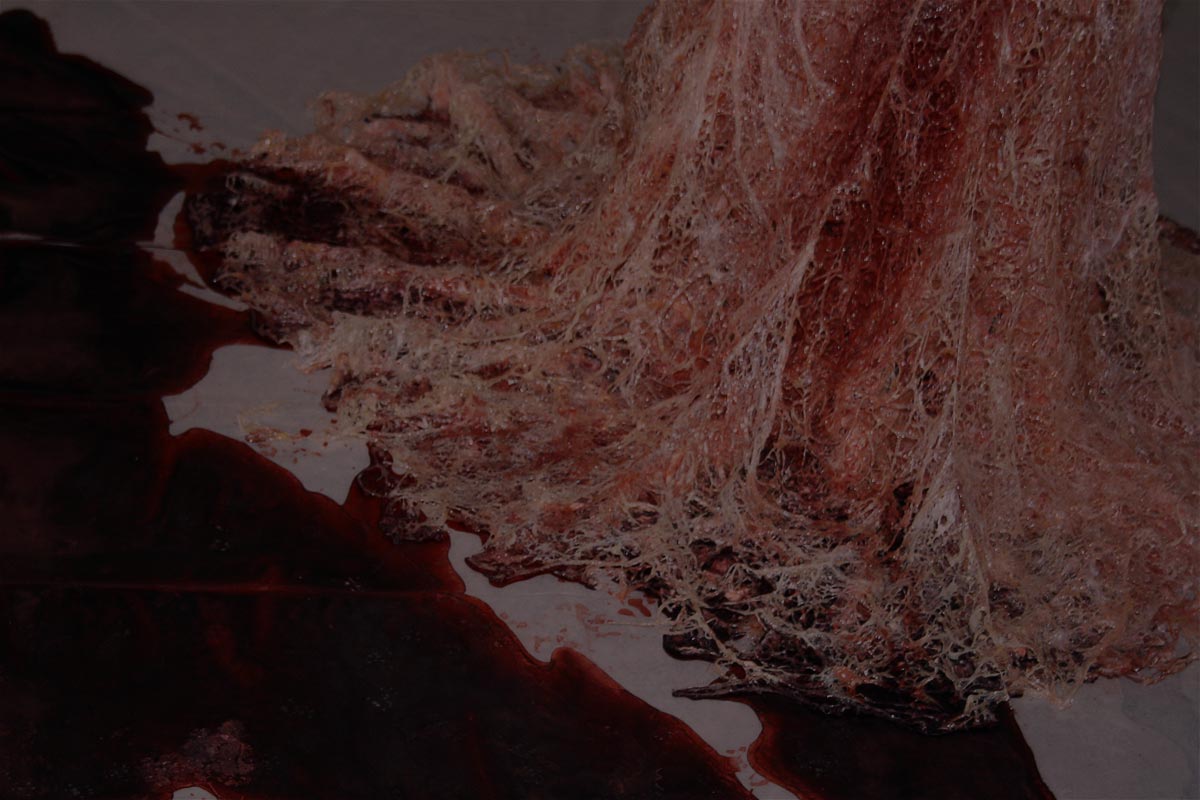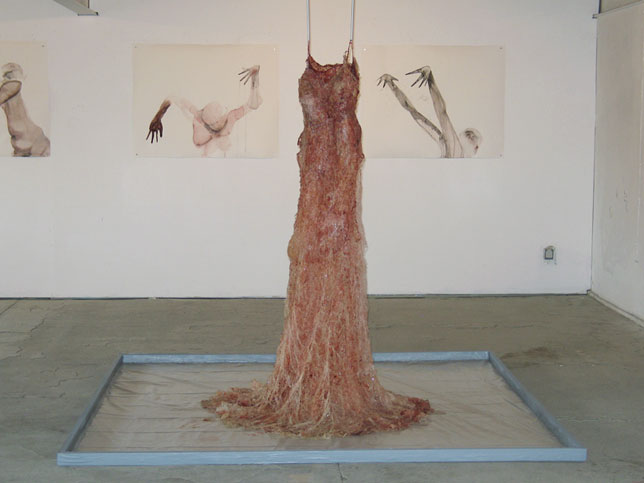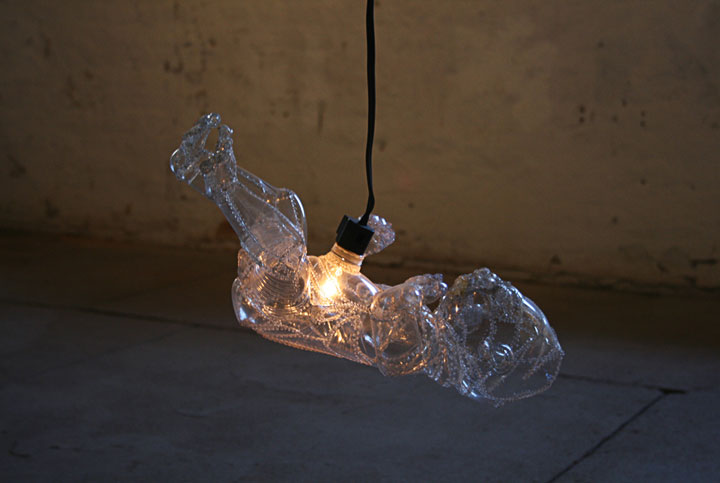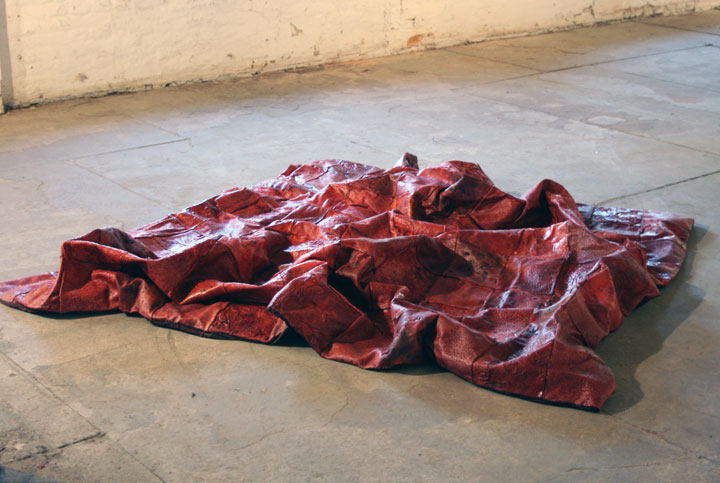NO ROOM FOR DETACHMENT
By Joshua Weiner
On the occasion of D. Zorreguieta's solo show "The Bleeding Dress" at STYX Projects in Berlin.
Have they not heard one of those dreams by
which the dreamer remains overwhelmed, having, in the felt condition of an inexhaustible rebirth, plumbed the depths of the pain of existence? ... Or, in order to put
hell’s torments back in their place, torments which could never be imagined beyond what men traditionally inflict in this world.—Jacques Lacan, Kant with Sade
Attached – hanging from the ceiling of STYX, and dripping slowly towards us from below, the majestic centerpiece ›Bleeding Dress‹ welcomes you into a space of its own. Greeted by this lifesized dress installation, which cushions an absent body, we are asked to face the static pulse of a violence suspended enigmatically beyond our reach. The dress wishes to speak with us, and it says, in the words of Baudelaire: »I am the wound and the knife.«
Argentinian artist Dolores Zorreguieta takes the viewer to a place where violence and memory, the political and desire, ghost-figures and fleshy embodiments stand still and gaze at us with uncannily familiar regards. Her figures open up for us a space of stillness, where we are asked to listen for the echoes of social pain taken into the body, and in turn to attend to how bodies can either gently or insistently secrete themselves to us. One encounters here a distinct aesthetic experience – exciting because so carefully sustained – where one simply cannot tell whether it is speaking to situations of political violence or from a condition of gendered embodiment that is meant to be predominant. In these pieces a feminist voice disappears into a voice that merely witnesses, and mysteriously we find in that voice’s unsaid the lineaments of the body in all its fleshy, sexed materiality. Zorreguieta’s art courageously explores these silenced borderlands of the social and the psyche.
Her centerpiece, Bleeding Dress holds together the white wool fibres – rendered plastic by acrylic resin – of a dress for that most public of occasions with the body’s most intimate fluid, regularly seeping out through its tissue. Combining the macabre grandeur of a figure in Francis Bacon with the material gravity of an Eva Hesse, this installation contains all the force of a single act of suspended violence conveyed to the viewer by the bonding power of blood. A kind of mechanical performance piece, it asks us to mourn for a body we never quite had in our grasp.
On the surrounding walls are series of watercolors, Manos Sucias , in which a series of ghostly nudes are dragged in, bleeding into the paper with their black-stained hands. Like the phantom essences of bodies from Lucien Freud, the disarticulated figures address us with an almost literal duty to re-member what cannot be remembered, and to hold together what is slowly leaking away.
In a companion installation, My Baby Frankenstein, Zorreguieta produces a body shaped into form by recycled plastic, and connected to the outside only by an electrical umbilical cord ending in a lightbulb illuminating it from within. Here, suggesting a dark parody of a Gonzáles-Torres light piece, what shines through in the place of blood is only the ambient black space of disconnection.
But the first piece we see, Quilt, reminds us that what bleeds also has the power to wed. A patchwork of red leather-like squares laid out on the floor of STYX, both a grid and a complex of folds, it presents itself to us like a second skin of memories that can nevertheless be quilted together: like a promise of tenderness, this art invites us to lay back with it, close our eyes, and make room to dream.
Josh Weiner is a Ph.D. candidate in the Department of English at U.C. Berkeley and a freelance writer. His work concerns the history of aesthetics, media theory, and queer theory. He lives and works in San Francisco.
BACK TO TEXTS BY OTHERS
GO TO WORK SECTION
WATCH EXHIBITION VIDEO





